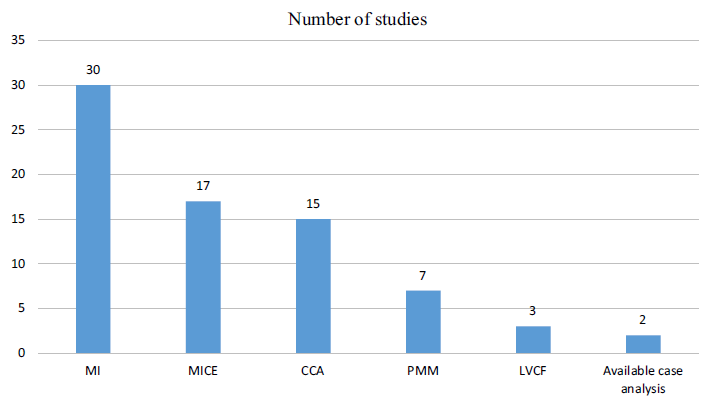
[ad_1]
That’s the questioned answered in a paper by Mukherjee et al. (2023). The authors outline an “HEOR examine” for this paper as
…real-world proof research that carried out a secondary/post-hoc evaluation utilizing randomized
managed trial (RCT) information, and a within-trial cost-utility evaluation during which the result of curiosity was prices or PROs together with preference-based utilities (e.g., EQ-5D).
Probably the most applicable strategy for imputing lacking information is dependent upon the assumptions about how the info are lacking:
- Lacking fully at random (MCAR): the noticed or unobserved values of all variables in a examine should not have any affect on the chance of an statement being lacking
- Lacking at random (MAR). The chance of lacking information for a specific variable is related to the noticed values of variables (both noticed values of different variables within the dataset or noticed values for a similar variable at earlier timepoints) within the dataset, however not upon the lacking information. One can not check for whether or not MAR holds in a dataset.
- Lacking Not at Random (MNAR). On this case, the chance of lacking information for a specific variable is said to the underlying worth of that particular variable. MNAR might be ignorable (when lacking values happen independently of the info assortment course of) or non-ignorable (when there’s a structural trigger to the missingness mechanism that is dependent upon unobserved variables or the lacking worth itself).
To deal with the lacking information, numerous strategies can be found together with: complete-case evaluation (CCA), available-case (AC) evaluation, a number of imputation (MI), a number of imputation by chained equation (MICE), and predictive imply matching.
To raised perceive which approaches are generally utilized in well being economics and outcomes analysis (HEOR), the authors carried out a scientific literature assessment in PubMed and examined what sort of statistical strategies had been used to handle lacking value, utility or patient-reported end result measures.
The authors discovered that a number of imputation, a number of imputation by chained equation and complete-case analyses had been mostly used:
From 1433 recognized data, 40 papers had been included. 13 research had been financial evaluations. Thirty research used a number of imputation with 17 research utilizing a number of imputation by chained equation, whereas 15 research used a complete-case evaluation. Seventeen research addressed lacking value information and 23 research handled lacking end result information. Eleven research reported a single technique whereas 20 research used a number of strategies to handle lacking information.

The authors notice that whereas they discovered a considerable amount of HEOR methodological literature on deal with lacking information in a RCT context; nonetheless, there have been only a few research which have tried to really implement these suggestions and impute the lacking information. You may learn the complete article right here.
[ad_2]